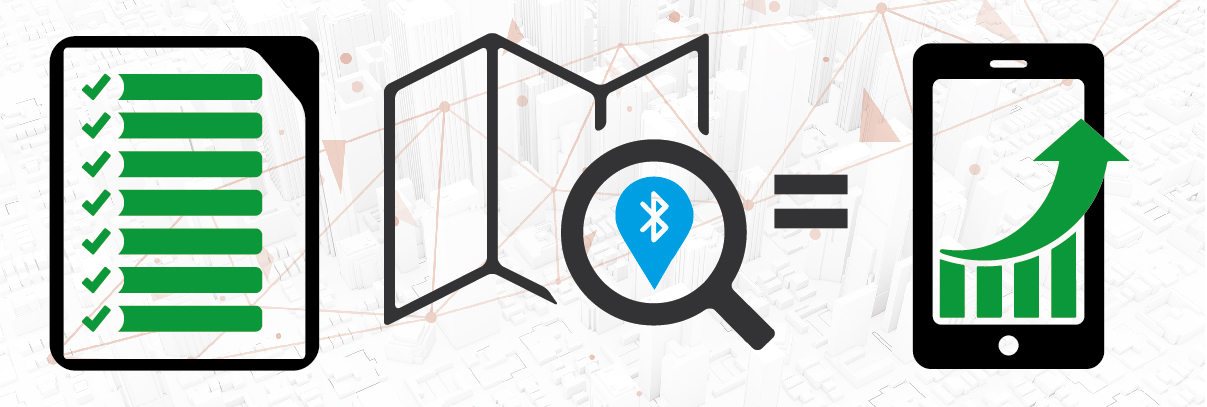7 CHECKS FOR SAFE INTEGRATION
We’ve put together a special e-paper for you: In “The 7 Checks for Safe Integration”, you’ll find practical criteria for selecting the right RTLS (Real-Time Location System) solution. Digitally locating objects and people in real time offers enormous potential — from optimized logistics and more efficient production processes to enhanced workplace safety. But with the wide range of systems and vendors available, an inevitable question arises: How can the various solutions be compared meaningfully? And how do I choose the right system for my needs?
Real-Time Location Systems as a Key Technology
Over the past few years, RTLS has emerged as a key technology for real-time tracking of objects and people. Various technical approaches are used — from Ultra-Wideband (UWB) to Bluetooth Low Energy (BLE), RFID, and Wi-Fi-based systems. Each of these has specific strengths and weaknesses depending on the application area, infrastructure, and budget.
The variety is large, but not every solution fits every use case. That’s why it’s crucial to make the right decision — based on well-thought-out criteria and hands-on expertise.
19 Years of Project Experience
Our checklist is based on more than 19 years of experience working with well-known partners from a wide range of industries. During this time, we’ve supported countless projects — from small pilot applications to company-wide rollouts. Both customer feedback and our own technical and organizational insights have shaped this checklist.
We know: The success of an RTLS project doesn’t depend solely on the technology. It’s often the details in planning, integration, and day-to-day use that make the difference.
Who Is This E-Paper For?
This e-paper is aimed specifically at B2B partners, project managers, and decision-makers who want to implement RTLS within a broader context — whether as part of a digital transformation initiative, to optimize asset tracking, or to expand an existing platform.
You’ll benefit from “The 7 Checks for Safe Integration” if:
-
You are comparing multiple RTLS systems and want to make an informed decision.
-
You are planning to integrate asset tracking as a new feature into your existing solution.
-
You want to avoid common mistakes and choose a future-proof solution.
-
You are looking for a scalable and low-maintenance system that performs reliably in daily operations.
Why a Checklist?
In the B2B sector, decisions are often long-term and not easily reversible. Choosing the wrong RTLS solution can waste valuable resources and damage trust. With our checklist, we aim to provide you with a practical tool that helps you identify relevant factors and ask the right questions.
Because: Only those who verify the critical success factors early on will avoid unpleasant surprises later.
What Makes a Good RTLS System?
A powerful RTLS system should offer the following key features:
-
Reliable real-time data on the location of objects and people
-
Seamless integration into existing systems and processes
-
User-friendliness for everyone involved — from end users to administrators
-
Scalability, to grow alongside your business
-
Security and data protection, especially in industrial environments
-
Low-maintenance infrastructure, to keep operating costs down
-
Flexibility in the choice of hardware and wireless technology
These are exactly the aspects our checklist covers — clearly presented and easy to understand.
Safectory: Turning Events Into Data
At Safectory, our mission is to transform events into actionable data — delivering measurable value for our clients. RTLS does more than just provide coordinates or movement profiles. It serves as the foundation for automated processes, smarter decisions, and greater operational efficiency.
We support companies in digitizing their physical world. And we know: No project is like another. That’s why it’s so important to choose a system that is adaptable, robust, and future-proof.
The Value for Your Project
By working through the 7 Checks, you’ll gain clarity on the requirements and capabilities your RTLS system must fulfill. You’ll identify potential weaknesses early and be able to make informed decisions.
At the same time, you lay the foundation for a system that not only performs well technically but also functions reliably over the long term — economically, organizationally, and operationally.
Avoiding the Most Common Pitfalls
From experience, we know: Many companies underestimate the effort required to plan, integrate, and maintain an RTLS system. Others choose solutions that work only under ideal conditions, but fail in real-world environments. The result: frustration, rising costs, and failed projects.
Our checklist helps you avoid these mistakes. You’ll learn:
-
What to consider when selecting a wireless technology
-
Why a strong backend is just as important as the sensors
-
Which integration options really matter
-
How to measure user-friendliness
-
Which support and service aspects are crucial for everyday operations
Conclusion: 7 Checks for Safe Integration
An RTLS system is more than just technology — it’s an investment in your long-term competitiveness. Only when all relevant aspects are carefully considered can it unfold its full potential. With our 7 Checks, you’ll lay the groundwork for a successful RTLS implementation.
Take the time to go through each point, and make your decision not based on a gut feeling — but on experience and clear criteria.
Because only a well-designed, user-friendly, and scalable RTLS system will ultimately provide what really matters: reliable event data, optimized processes, and lower costs.

